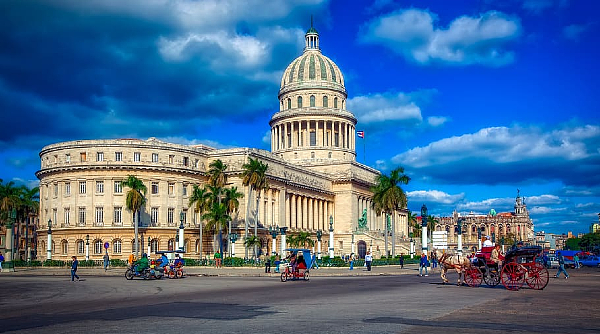CUBA – historic, musical, sun-drenched, charming, natural, friendly, inviting, unique
There are so many words to describe this Caribbean island destination. And so many reasons to visit. From its iconic old towns and cities in Havana, Santiago de Cuba, Trinidad and so many more, to its breathtaking beaches, flora and fauna, pristine reefs, and unspoiled national parks; from the vibrant music, cigar, and mojito scene to the tranquil cays; and from the ramshackle charm of UNESCO heritage architecture and 1950s cars to the modern luxury of world-class hotels and restaurants now calling Cuba home; this country’s genuine enduring welcome, appeal, and warmth keep it perennially at the top of any must-see list.
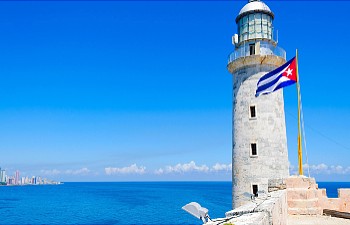 How to Get to Cuba
How to Get to Cuba
There are two ways to get to Cuba: Air and Sea. Cuba has 10 International Airports, 15 National Airports, 4 cruise terminals, and 15 international marinas.
International Airports in Cuba:
• José martí (Boyeros, La Habana) • Vitalio Acuña (Cayo largo, Isla de la Juventud) • Juan Gualberto Gómez (Matanzas, Varadero) • Ignacio Agramonte (Camagüey) • Frank País (Holguín) • Antonio Maceo (Santiago de Cuba) • Abel Santamaría (Santa Clara, Villa Clara) • Jaime González (Cienfuegos) • Jardines del Rey (Cayo Coco, Ciego de Ávila) • Sierra Maestra (Manzanillo, Granma)
Cruise Terminals:
• La Habana (Avenida del Puerto) • Cienfuegos (Calle La Mar) • Isla de la Juventud (Punta Francés) • Santiago de Cuba (Avenida Jesús Menéndez) • Plus 15 international marina or strategic points servicing medium and small boats
Clearing Customs
Visitors who are well prepared and adhere to a few simple rules should have smooth trips through customs, both when entering and leaving Cuba.
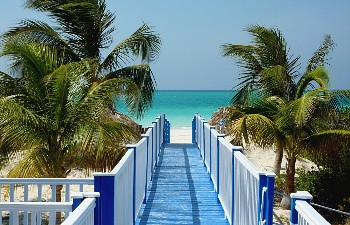 Inbound Travellers
Inbound Travellers
In addition to their personal jewelry, cameras, and other valuables, visitors are allowed to bring into Cuba, duty-free, two bottles of liquor, one carton of cigarettes, and up to 10 kilograms of medicine. Gifts up to a value of $250 US can also be brought in. Of that, $50 is duty-free; the rest is 100 percent taxable. Narcotics and firearms, except for authorized hunting weapons, are not allowed into the country. No restrictions exist on the amount of money a visitor can bring into the country, but amounts over $5,000 US should be declared. VCR and DVD players are now allowed into Cuba.
Tourists are allowed to take their personal effects which include the articles (new or used) that they reasonably need for their holidays (according to the length and purpose of the trip), plus:
• Sport equipment
• Jewels
• Photographic camera and camcorder
• Cellular phones and blackberries
• Laptops, iPods, MP3 players, and video games
• Hairdryers and electric shavers
• Binoculars, one portable radio receiver, tape recorder, one portable music instrument, and a sound recording device
It’s prohibited to bring into the country:
• Narcotics (except for those of personal use accompanied by the corresponding doctor’s prescription letter), pornography, explosives, and firearms although the latter can be authorized by the organization in charge of this tourist modality when these are for the sport of hunting.
• Any item (including literature) intended to be used against the national security
• Animals and plants regulated under the Convention on International Trade in Endangered Species of Wild Fauna and Flora
• GPS, cordless phones (for the household) that operate in bands different than 40-49 MHz and 2,4 and 5 GHz
• Household appliances: freezers, air conditioners, electric kitchens and furnaces, electric ovens, electric showers, electric fryers, electric water heaters, irons (travel irons are allowed), toasters, and any spare electrical parts for the above
For further information and a complete list of the prohibited articles, please visit aduana.gob.cu
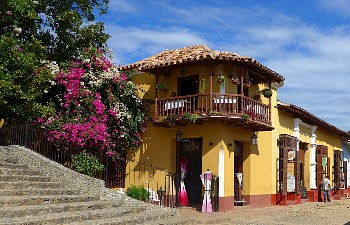 Outbound Travellers
Outbound Travellers
Visitors leaving Cuba can take out 50 cigars, and 1.14 liters of liquor (two regular-sized bottles of 750ml). To export other items, such as art and antiques, obtain a permit from the National Registry of Cultural Objects. Most legitimate vendors have such permits, and can officially stamp your receipt. Strict rules apply to taking plants and animals out of Cuba. The Convention on International Trading in Endangered Species (CITES) prohibits taking the following out of the country: indigenous flora and fauna; live or preserved specimens and articles made from parts of endangered species. However, articles made from species approved by the CITES Administrative Authority in Cuba may be taken out.
Entry Requirements
Canadian nationals holding a valid Canadian passport or a Canadian permanent resident card do not need a visa to enter Cuba. They can travel with their valid passports (and PR card) and the tourist card that is included in the holiday package (provided onboard or at the airline counter at airports in Canada at the time of check-in). It is important for you to know that the Canadian passport should be valid for at least one week after the return date. This also applies to Citizens from other countries holding either of the following categories:
• Valid Work Permit (holding multiple entry visas on passports)
• Valid Student Permit (holding multiple entry visa on passports) If you do not fall in either of the categories mentioned above, please contact the Cuban Consulate – Tourism Section at info@gocuba.ca
If you are sailing to Cuba, be sure to contact port authorities before you reach jurisdictional waters (12 miles from the baseline). Use these communication channels:
• HF (SSB) channel 2760 (national coastal network) and 2790 (tourism network) or
• VHF channel 68 (national coastal network) and 16 (tourism network)
Port authorities will ask you for the following information:
• Name of yacht • Flag • Port of registry • Last port of call • Port of arrival • Estimated time of arrival (ETA) • Type of craft • Colour of craft • Number of persons on board You must follow the instructions given by the port authorities and remain on board until all legal formalities are concluded.
How to Get Around the Island
 Cuba has excellent taxi services as well as car and van rentals. Tour buses cover the major sites of interest. For special excursions, contact the tourism desk at your hotel. Economy travel on public buses among major centers around the country is also available through Viazul. For information and schedules, visit viazul.com. The country has ten international airports, and 15 local ones, eight of which offer domestic charters and air taxis. Of Cuba’s extensive, 50,000-kilometre network of highways and roads, 14,000 kilometers are paved.
Cuba has excellent taxi services as well as car and van rentals. Tour buses cover the major sites of interest. For special excursions, contact the tourism desk at your hotel. Economy travel on public buses among major centers around the country is also available through Viazul. For information and schedules, visit viazul.com. The country has ten international airports, and 15 local ones, eight of which offer domestic charters and air taxis. Of Cuba’s extensive, 50,000-kilometre network of highways and roads, 14,000 kilometers are paved.
Currency
All goods and services in Cuba are priced in Cuban Convertible pesos only. The Convertible peso is value now at 1.08 US dollars. Currency exchange from US dollars in Convertible pesos will be subject to a 10% charge while transactions from Canadian dollars, Euro, UK Pounds, and Swiss Francs are not going to be taxed when exchanged into Convertible pesos, of course, the amount of CUCs you’ll receive for your Canadian dollar will depend on the value of the Loonie against the $US. To check exchange rates, please visit bc.gob.cu One Cuban Convertible Peso (CUC) equals 25 national pesos (CUP), the currency used by Cubans. Visa credit cards and Debit-Visa from Canadian Banks are accepted. Credit cards are not widely accepted outside of hotels. When issued by Canadian financial institutions cards are accepted in most hotels and major government-managed shopping centers in Cuba. Banks Hours: 8:30 am to 3:30 pm
Time
Cuba is on Eastern Standard Time. From May through October, Cuba moves into daylight savings time (an hour ahead).
Telecommunications
Cuba’s telephone network provides direct communications inside the country and out – with any part of the world. Most hotels and resorts also provide Internet connections and Wi-Fi service. Wi-Fi is available also in the main squares in major cities across the country. Wi-Fi is not free, the local telephone company sells a calling card for 2.00 CUC per hour that can be used anywhere in Cuba.
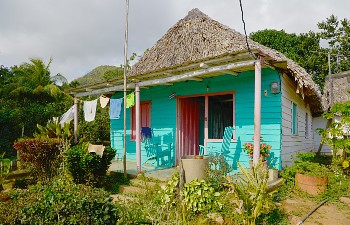 Cuban Phrases
Cuban Phrases
Here are some uniquely Cuban phrases you likely didn’t learn at school: ¡Acere, qué bolá! – How’s it going buddy? Chévere – Cool! ¡Chao pescao! – See you later, alligator (actually fish)
With a response of: Y a la vuelta picadillo! – And next time mincemeat! Está volao – that’s amazing En talla – it’s a good fit / makes sense Me piro – I’m going to get going Phrases courtesy of InsightCuba
Health Care and Insurance
Tourists need travel insurance in order to visit Cuba. You can use your travel insurance from work or buy it at your travel agency or financial institution. In Cuba, insurance can be obtained at the airport on your arrival from Asistur S.A., the country’s official travel insurance company. For more information contact Asistur S.A. directly at asistur.cu
All hotels have doctors on staff or on-call who guarantee primary care. Every major resort area also has an international medical clinic that handles more complex medical conditions. These clinics are scattered across the country in:
• Havana • Pinar del Río • Varadero • Cienfuegos • Cayo Santa Maria • Cayo Largo • Trinidad • Cayo Coco • Santa Lucia • Guardalavaca • Santiago de Cuba
Electrical Equipment
Cuba’s electricity is 110 volts, 60Hz, but most hotels and resorts have 220 volts. Electrical outlets take flat plug prongs (as in North America). If you’re bringing an electrical appliance, check before you leave to see if you need an adaptor or converter.
Source: WheelsUp Network


